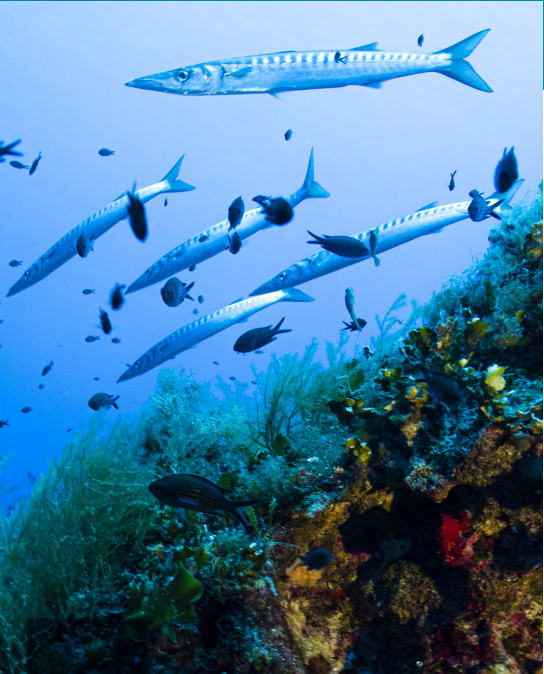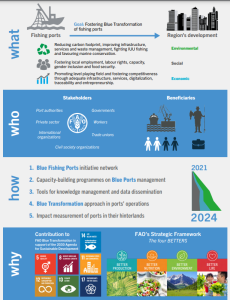In this Article
The United Nations Food and Agriculture Organization (FAO) launched the Blue Fishing Ports initiative to promote positive and sustainable socio-economic growth while reducing the environmental impact of fishing ports.

Source: FAO
A fishing port is an essential link for many actors in the fisheries and aquaculture value chain, including fishers, buyers, sellers, service providers, and public and private institutions. It has the potential to support sustainable fisheries and aquaculture, catalyze the reduction of waste and pollution to the environment, preserve the nutritional value of aquatic foods, and provide incentives for fair prices and increased exports.
The FAO Blue Fishing Ports initiative aims to leverage the strategic position of fishing ports in the fisheries and aquaculture value chains to promote positive and sustainable socio-economic growth while reducing the environmental impact of fishing ports. With the participation of 20 port authorities, fisheries sector administrations, and cooperation of international organizations, this initiative started particular initiatives such as capacity building, knowledge management, and technical assistance.
FAO Blue Fishing Ports Initiative (Click to Enlarge)
Additionally, a FAO umbrella program is being developed to support fishing ports in designing and implementing Blue Transformation strategies that balance between social, economic, and environmental dimensions. As defined by FAO, Blue Transformation is a targeted effort to promote innovative approaches that expand the contribution of aquatic food systems to food security and nutrition and affordable healthy diets.
Reference:
Food and Agriculture Organization of the United Nations. (2022). The State of World Fisheries and Aquaculture 2022. Towards Blue Transformation. Rome, FAO. Retrieved November 21, 2022 from https://doi.org/10.4060/cc0461en





